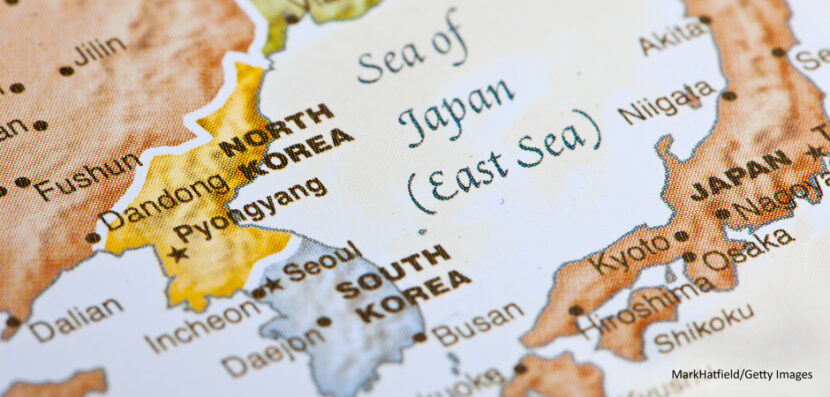The War of Words Between the U.S. and North Korea
Ever since President Trump’s inauguration in January, the relationship between the United States and North Korea has rapidly weakened. Last week, tensions came to a head when Trump and the leader of North Korea, Kim Jong-un, began publicly talking about nuclear missile launches. Here, Election Central takes a look at how and why things got this stage.
Escalating Tensions
When Trump took office in January, his position on North Korea was uncertain. However, less than a month after Trump’s inauguration, North Korea successfully launched a new ballistic missile, the Pukguksong-2. Then, in March, North Korea fired four more missiles into the Sea of Japan, three of which landed within 200 miles of the Japanese coast. Meanwhile, the U.S. continued to supply South Korea with a missile defense system and sent missile defense ships to the Sea of Japan. Five days later, North Korea successfully tested a rocket engine.
In April, North Korea launched another ballistic missile. When the U.S. sent a naval strike group to the area, North Korea spoke out against what it saw as acts of aggression by the United States. Later in the month, North Korea showed off its new missiles and launchers at an annual military parade. On April 20, North Korea was officially condemned by the UN Security Council. And after several more missile launches in May, the UN Security Council voted in June to impose new sanctions on North Korea.
In July, Kim Jong-un upped the ante by testing nuclear-capable intercontinental ballistic missiles (ICBMs) that might possibly have the flight range to strike major cities on the U.S. mainland–including Los Angeles, Denver, and Chicago.
Last Week
Last week, as North Korea continued its provocative nuclear tests, President Trump responded by saying that any attack on the United States would be “met with fire and fury like the world has never seen.” Kim Jong-un then stated that it is following up on plans to aim missiles at the U.S. territory of Guam by the middle of August.
While some Americans approve of Trump taking a hard line against North Korean aggression, others believe that the president’s threats to fight fire with fire have actually worsened the tense situation, bringing the United States and North Korea ever closer to the brink of war.
What Happens Now?
Is a diplomatic solution to this crisis still possible? Ultimately, the problem will only be able to be solved through communication. But for that to happen, both leaders will need to publicly indicate a willingness to work together and figure out a common plan for nuclear de-escalation. Sources close to the White House have indicated that although the president hopes to be able to solve the problem through diplomacy, he is ready to take military action if necessary.



